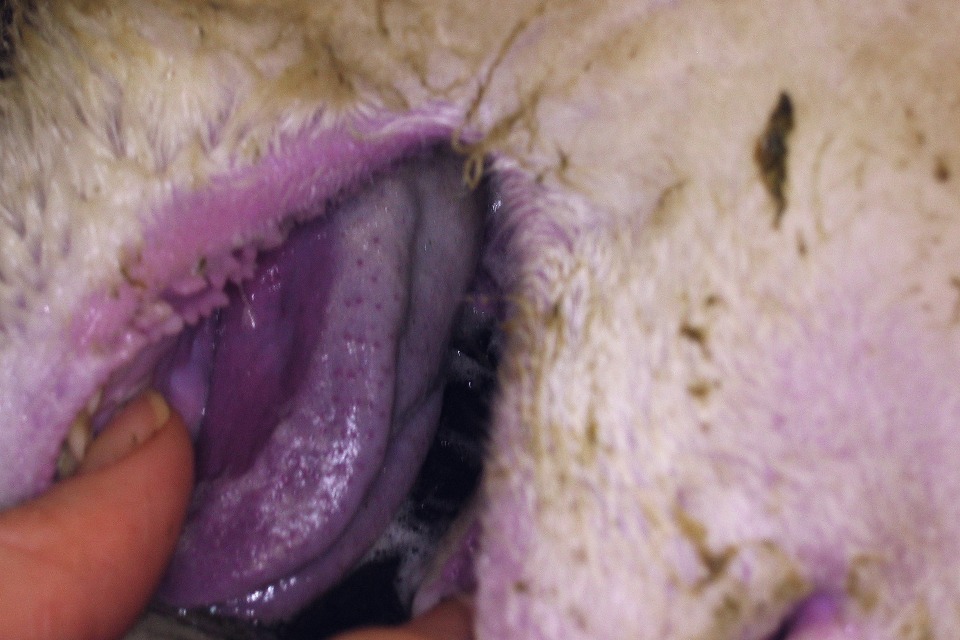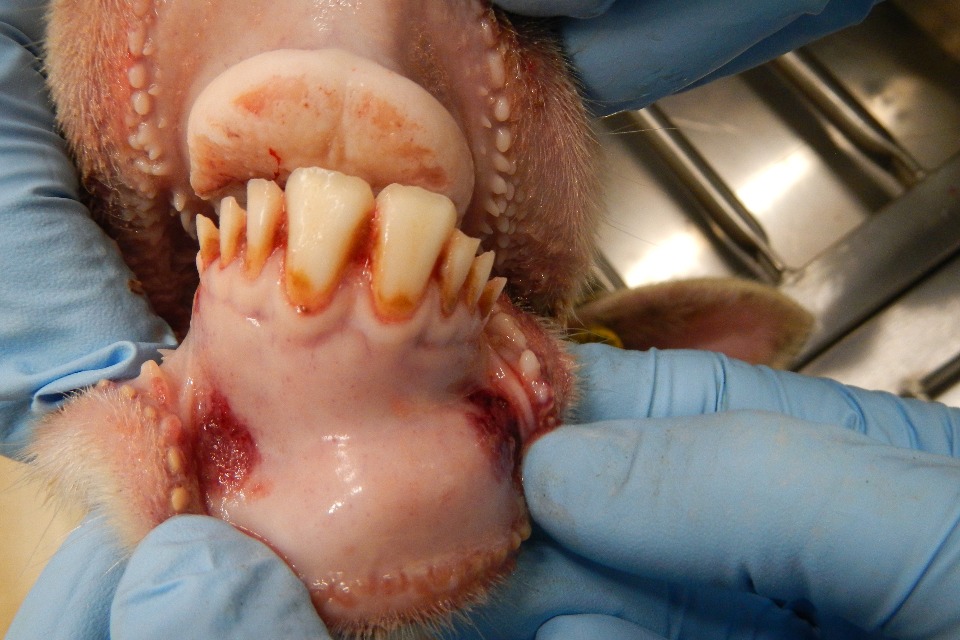Animal Plant Health Agency

Bluetongue is a notifiable disease caused by infection with bluetongue virus. Bluetongue virus is mainly spread by biting midges.
Bluetongue virus affects:
- sheep
- cattle
- other ruminants such as deer and goats
- camelids such as llamas and alpacas
Rarely, bluetongue can affect dogs and other carnivores if they eat infected material (such as aborted material and afterbirth).
It does not affect people or food safety, but outbreaks can result in prolonged animal movement and trade restrictions.
Signs of bluetongue
If you keep livestock, you must keep a close watch for and report any suspicion of bluetongue in your animals.
The severity of the infection depends on the type (serotype) of the virus and may also be affected by the strain.
In sheep
Sheep are more likely to show obvious clinical signs of bluetongue than cattle if they become infected with bluetongue virus. Signs of bluetongue in sheep include:
- ulcers or sores in the mouth and nose
- discharge from the eyes or nose and drooling from mouth
- swelling of the lips, tongue, head and neck and the coronary band (where the skin of the leg meets the horn of the foot)
Other clinical signs include:
- red skin as a result of blood collecting beneath the surface
- fever
- lameness
- breathing problems
- abortion, foetal deformities and stillbirths
- death
In lambs
Lambs can become infected with bluetongue virus before birth if the dam is infected while pregnant. Signs of infection include:
- lambs born small, weak, deformed or blind
- death of lambs within a few days of birth
- stillbirths
In cattle
Signs of bluetongue in cattle include:
- lethargy
- crusty erosions around the nostrils and muzzle
- redness of the mouth, eyes, nose
- reddening of the skin above the hoof
- nasal discharge
- reddening and erosions on the teats
- fever
- milk drop
- not eating
- abortion, foetal deformities and stillbirths
Adult cattle may be infectious for several weeks while showing little or no sign of disease. They are often the preferred host for biting midges (the vector of bluetongue virus).
In calves
Calves can become infected with bluetongue virus before birth if the mother is infected while pregnant. Signs of infection include:
- calves born small, weak, deformed or blind
- death of calves within a few days of birth
- stillbirths
Photos of signs of bluetongue

Credit: The Pirbright Institute.
A photo of a sheep with its mouth open showing a blue and swollen tongue.

Credit: The Pirbright Institute.
A photo of a sheep with its open mouth open showing ulcers on the gums.
There aremore photos showing the signs of bluetongueon Flickr.
Report suspected bluetongue
If you suspect bluetongue, you must report it immediately by calling:
- 03000 200 301 in England
- 03003 038 268 in Wales
- your localField Services Officein Scotland
Bluetongue is a?notifiable disease. This means if you do not report it, youre breaking the law.
Find outwhat happens when you report bluetongue, including support available.
Preventing and controlling bluetongue
Find out how toprevent bluetongue and stop it spreading.
Last updated 7 May 2024 +show all updates
-
Added two photos showing signs of bluetongue in sheep.
-
Updated the latest situation: we are no longer in the seasonally low vector period. Updated information about the risk level from biting midges. The risk level has not changed.
-
Updated the number of cases of bluetongue in England.
-
Updated the number of cases of bluetongue in England.
-
Updated the number of cases of bluetongue in England.
-
Updated to latest situation section to reflect the number of cases in England.
-
Updated the latest situation section: there are currently 116 bluetongue cases in England on 67 premises in 4 counties.
-
From noon on Monday 19 February the temporary control zones (TCZs) in Kent, Norfolk and parts of Suffolk were lifted. Positive high-risk animals will remain under restriction as well as premises in the zones which have not yet been sampled.
-
Updated the Latest situation section: There are 106 bluetongue cases in England on 59 premises in 3 counties.
-
Updated information on cases: there are 99 bluetongue cases in England on 55 premises in 3 counties, and bluetongue serotype 3 (BTV-3) has been found in Kent, Suffolk and Norfolk.Added detail on specific movement licences: movements from the temporary control zone (TCZ) to slaughterhouses can cover multiple pick-ups from inside the TCZ.
